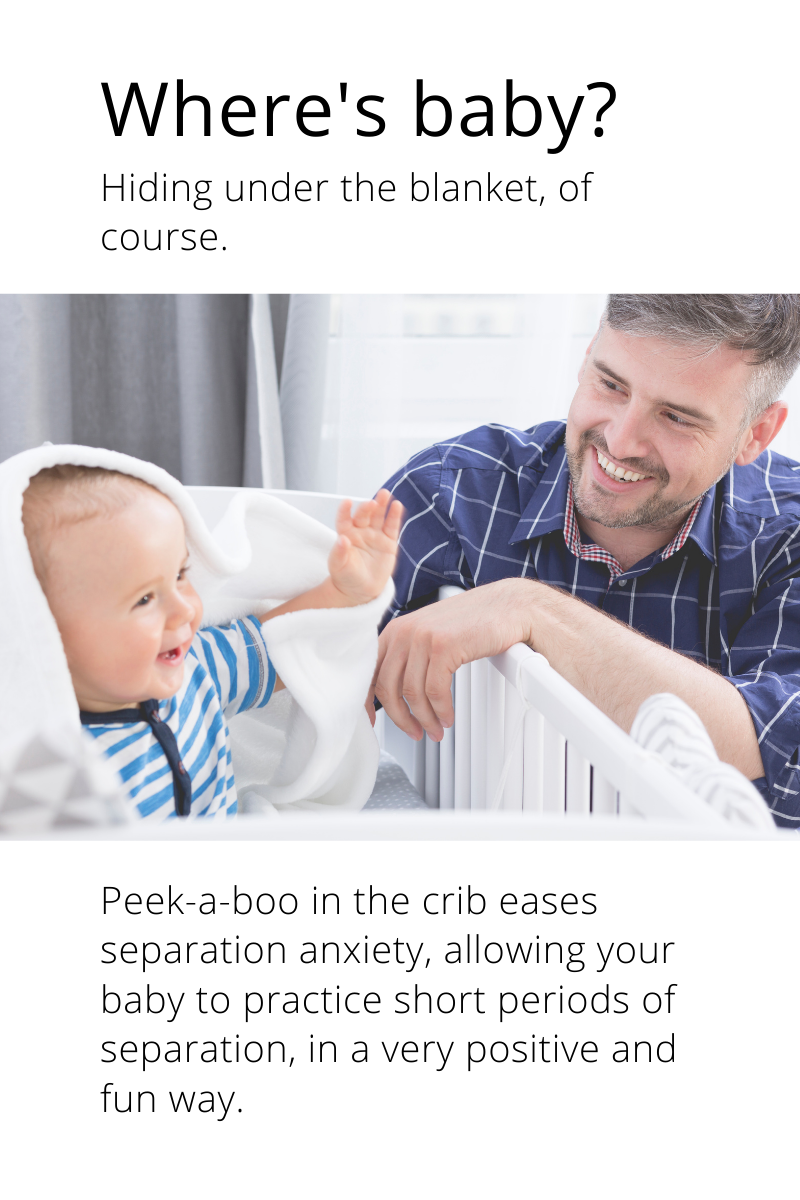Make the Bed a Happy Place
We’ve talked a lot about schedules and routines for babies and toddlers, and how they make falling asleep so much easier, but we haven’t talked about how to foster an actual love of the sleep and the sleep space. Over the years, 9 and counting to be exact, I’ve tried what feels like a thousand activities to help foster a love of sleep and the sleep space (some more successful than others). And anyone who knows me, knows that I LOVE sleep, and that I dream about sharing this great love with my children.
While no parent has the ability to force the love of sleep, or anything else for that matter, upon their child, here’s one thing that I know is true: spending lots of positive playtime together in the bedroom and in the crib/bed will help your child feel more comfortable and secure when it’s time to turn out the lights. Maybe they don’t adore (and frankly, fantasize about) their bed quite as much as I do, or as much as I imagine you do too, but wouldn’t it be nice if they didn’t hate it?
Here are 3 crib games that my babies loved...and how to recreate the fun with yours:
Stuffed Animal Dance Party: Place your baby in the crib with a few stuffed animals, hold onto a stuffed animal “dance partner” of your own and encourage your baby to do the same, turn on some happy music or start singing a little diddy yourself, and let the fun and silliness begin. Clap your hands, dance without abandon, flip the stuffed animals up in the air, and let your playful mood elevate your baby’s good feelings. My kiddos also loved it when I would line stuffed animals up along the crib railings, and them flip them into the air, one by one.
Hide-and-Seek (crib edition): Play a peek-a-boo game where you duck behind the crib or doorway (anywhere out of your babies view) and say “where’s mommy/daddy?” and then pop back up and say “I’m back!” or any other salutation or peek-a-boo variation. This particular game eases separation anxiety as well, since it allows your baby to practice experiencing short periods of separation, in a very supportive and positive way. You could also try hiding yourself under a baby blanket or lovey, and then popping out with a big smile. Your baby may want to emulate you and try their turn at hiding.
Face-To-Face and Heart-to-Heart: Sit on the floor so that your face is at crib level and have a little chat, blow kisses, sing a song, or play peek-a-boo. You could even offer kisses or a finger to hold through the crib slats. This way, you and your baby sit eye-to-eye and your baby will enjoy a deep connection with you while simultaneously laying or sitting in the crib. If your baby is pulling up on the crib rails, kneel or squat so that you remain face-to-face.
Horseplay can be okay too! It’s been shown that positive, safe, and active play (aka roughhousing) is good for mental and physical health. This type of “horseplay” can improve outcomes in a host of areas including: forming secure attachments, emotional intelligence, mental flexibility, coordination, physical health, and even sleep. Studies show that roughhousing can lead to the production of oxytocin (the “love” or bonding hormone) in the same way that cuddling with a parent can. It’s often reassuring for those parents who prefer the active play (over the calm and nurturing rocking or snuggling that comes so naturally to others) to know that they can help their baby feel loved and secure too, by bouncing, tumbling, and flying around the bedroom! Just keep timing in mind. Ideally we won’t be engaging in active play in the 30-45 minutes before bed, so that the heart rate can slow down and the transition to sleep is easier.
Practice happy playtime in the sleep space every day! Consistency helps both parents and baby, so add this playtime to the daily routine. Be sure to keep the lights bright and choose a time when your child isn’t already too sleepy. When playing these games, do your best to end the game before your child gets fussy. So keep an eye on your child’s response to play time and end the activities when you notice your little one is losing interest or getting a bit cranky.
Now that you’ve created a happy sleeping space for baby by having a dance party and blowing a few kisses around the room, your baby will begin to feel more at ease in the sleep space at bedtime. It may not happen overnight, but it will with consistent practice. Be sure to remove all play items such as toys, loose blankets, and stuffed animals from the crib before you put your baby in for sleep.
But remember, adjusting your baby’s expectations in any way takes time. If your baby doesn’t respond happily to your efforts at positive playtime in the crib at first, don’t give up. They will adjust with a little more time and practice playing in the sleep space. Also, remember that babies are sponges, learning about the world from your actions and reactions.Therefore, if you express hesitance or anxiety, they'll pick up on that and learn that the crib is an anxiety-provoking place to be. Keep the mood upbeat and light.
So try one of these activities! Let me know how it goes.

